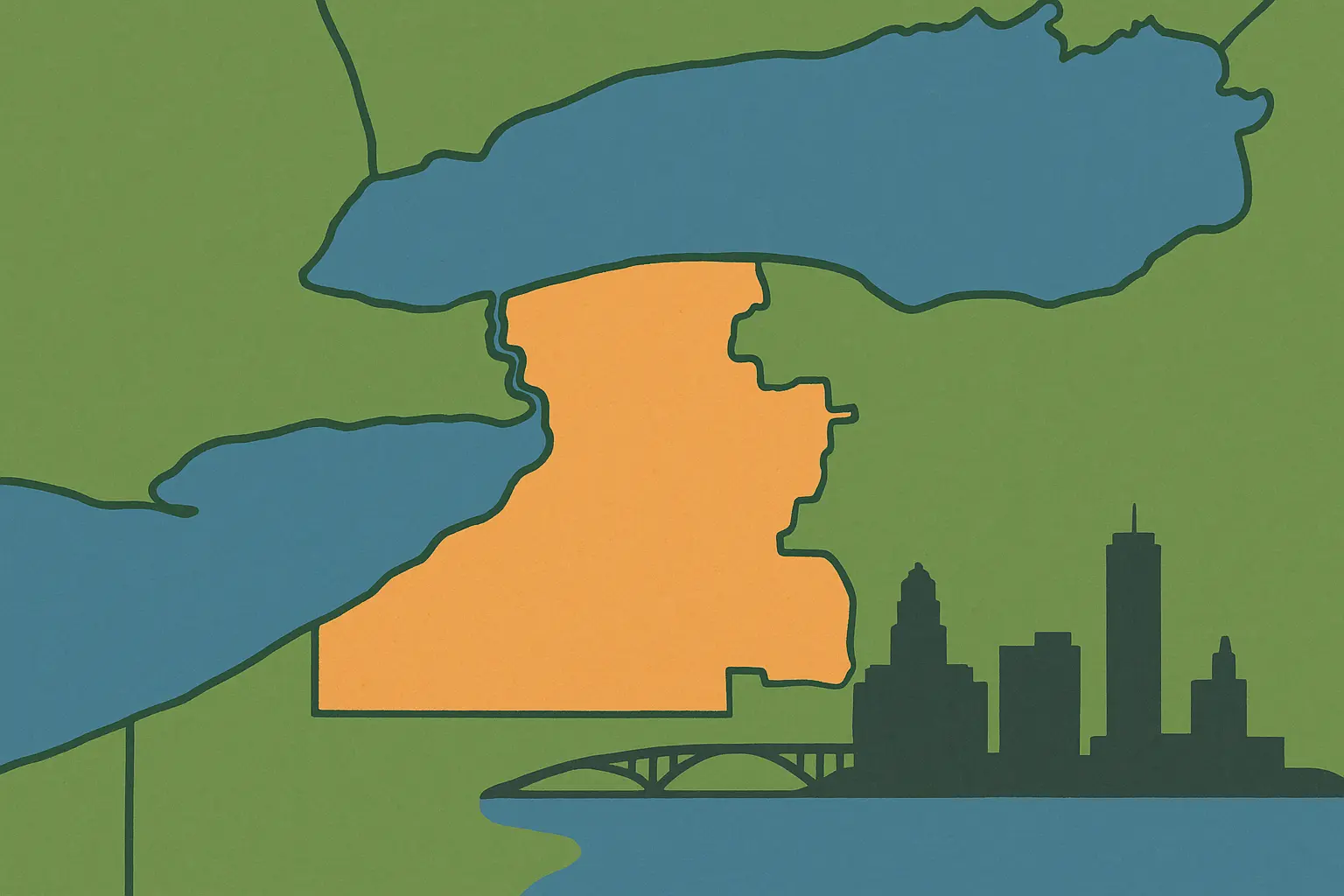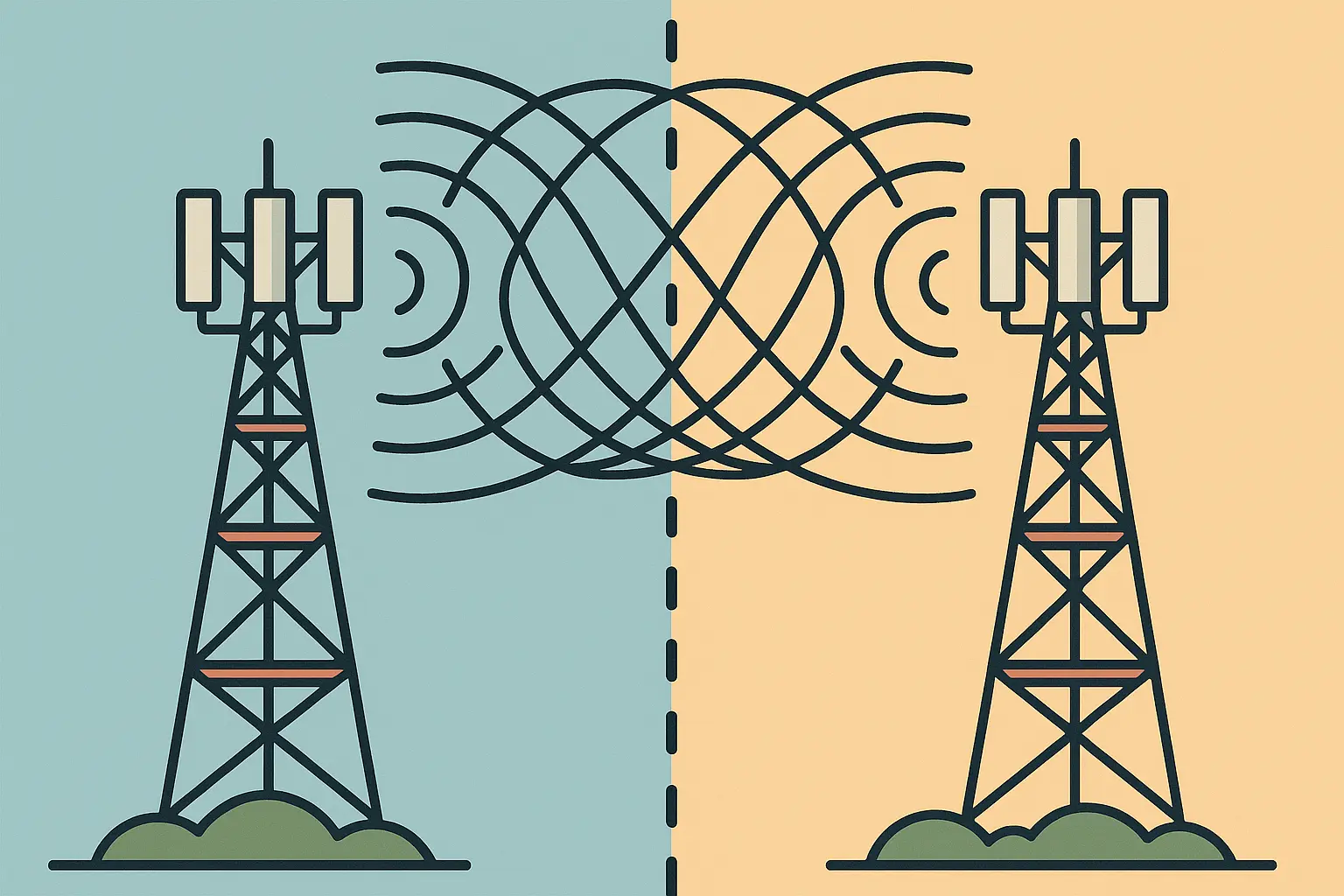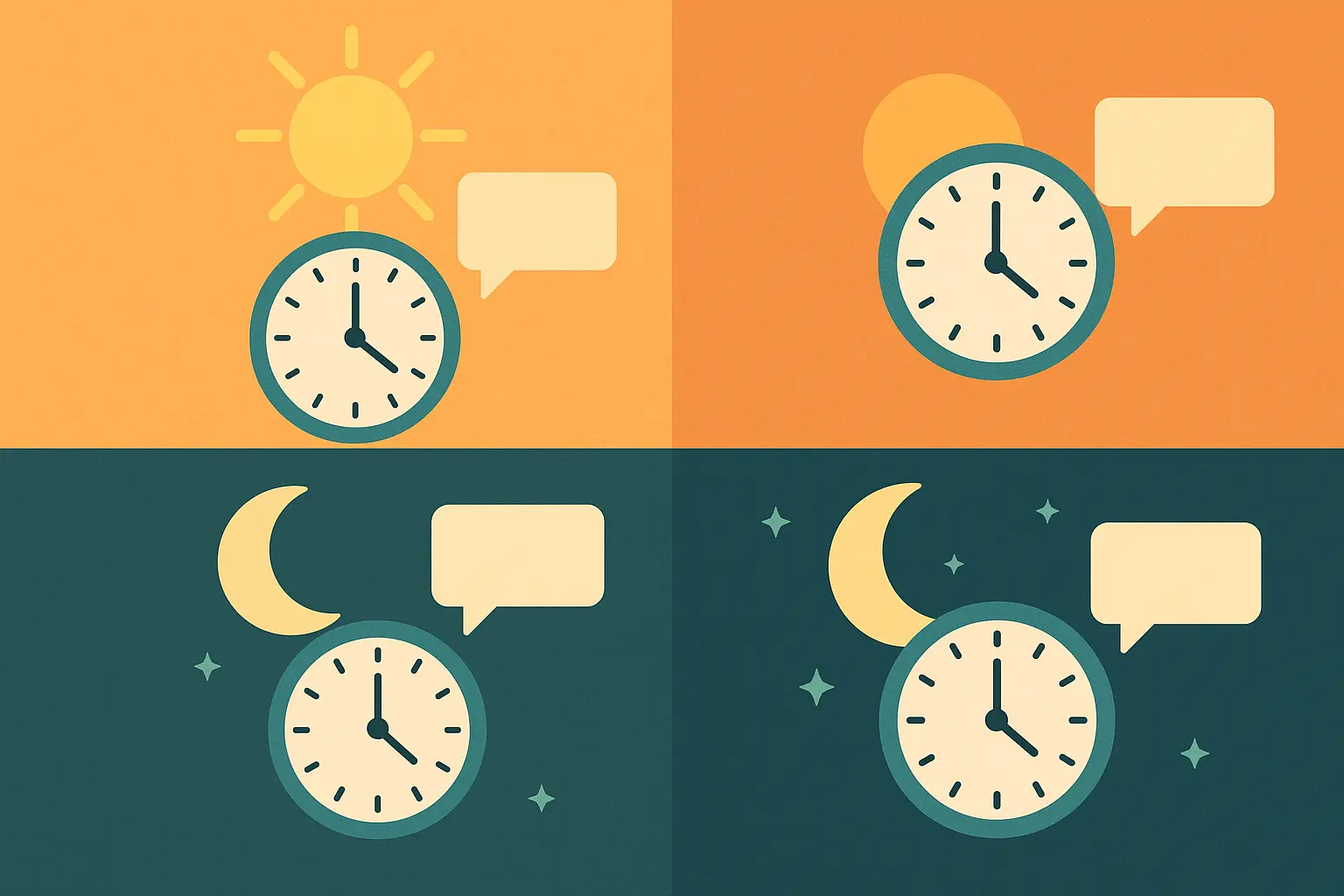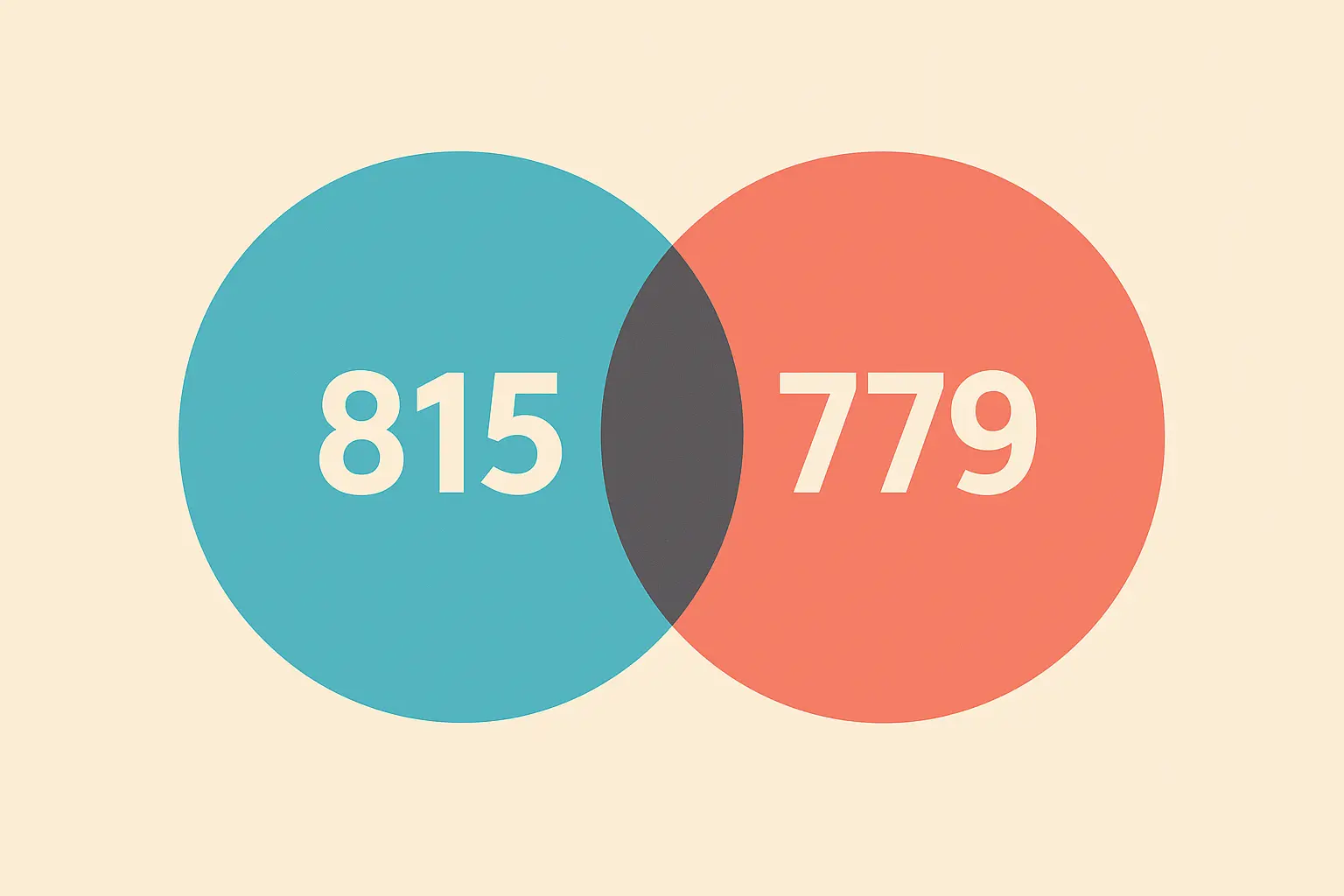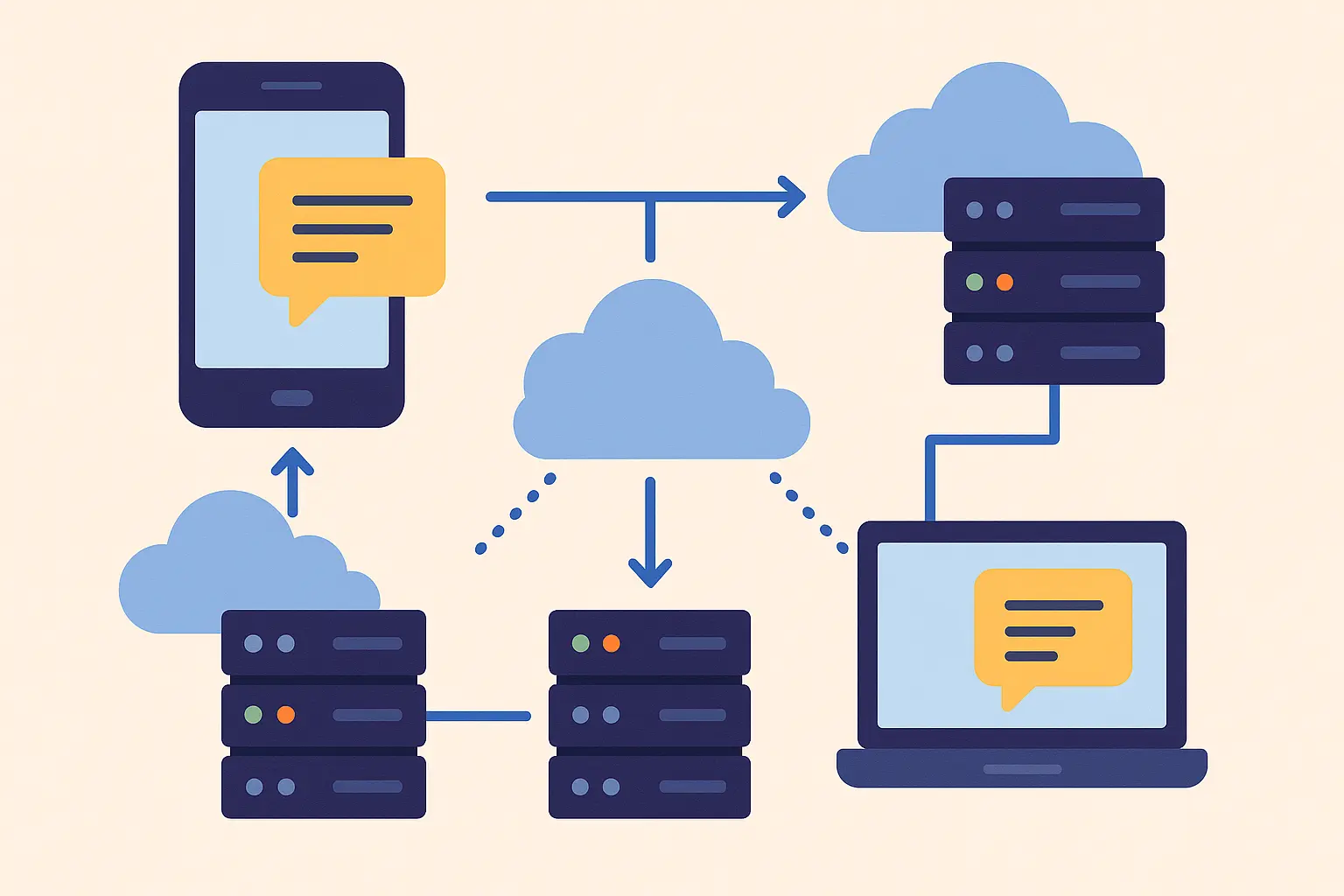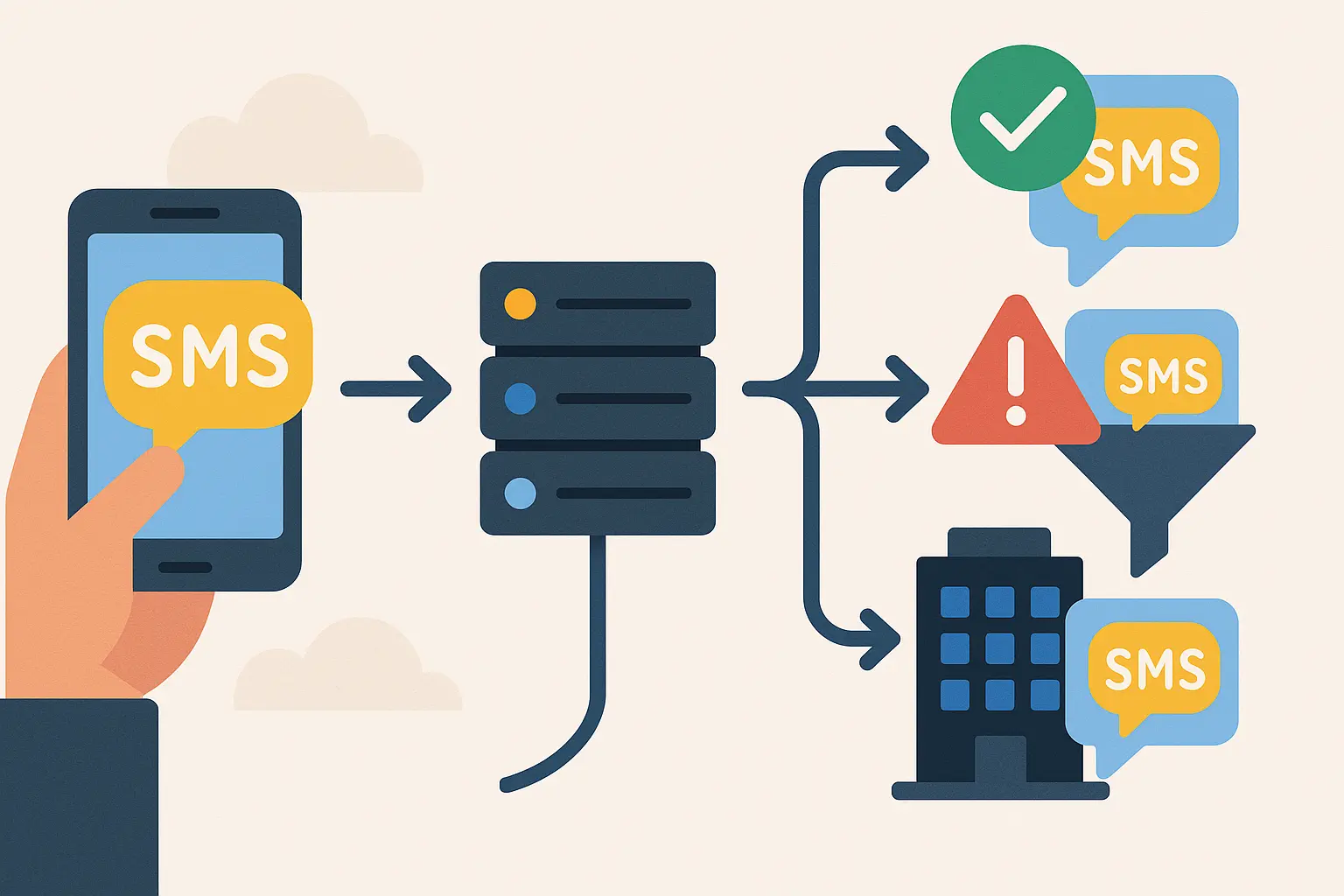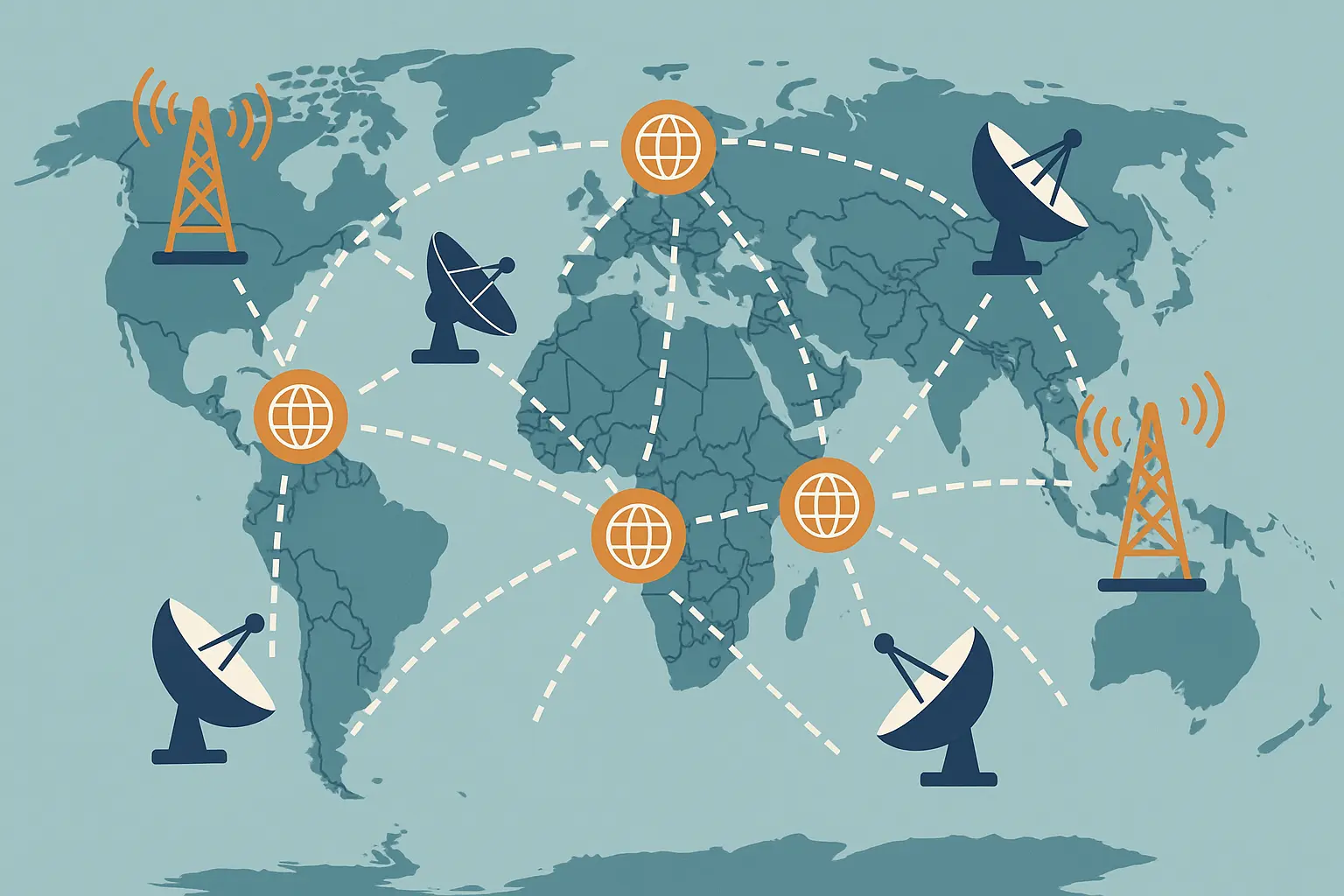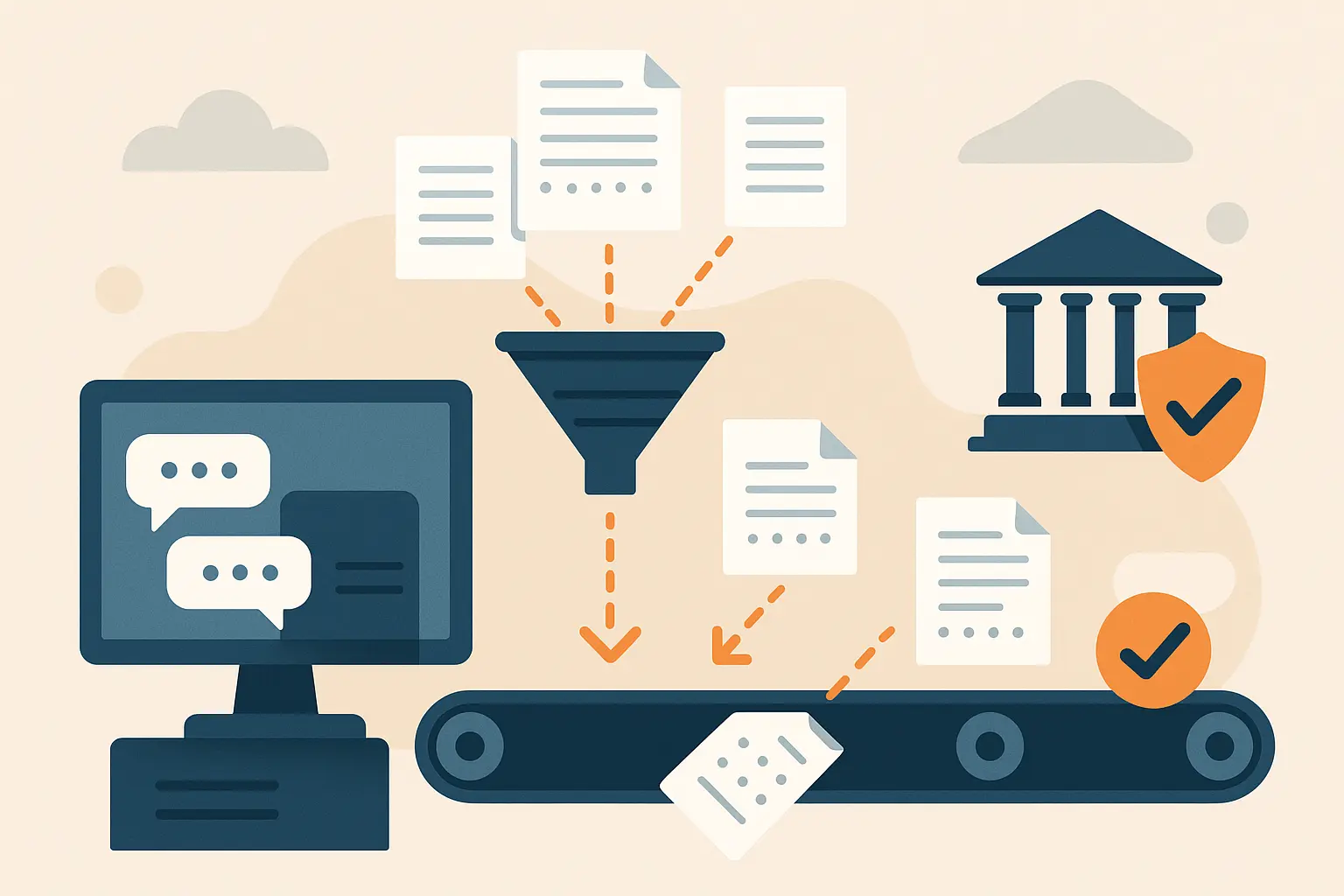Look, if you run a business in Buffalo, you’ve probably dealt with this nightmare: you send an important text to a customer, they swear they never got it, and you’re left wondering what the hell happened. Welcome to the wonderful world of operating in the 716 area code, where your messages can literally vanish into thin air.
Here’s the thing – Buffalo sits right on the Canadian border, and that creates some seriously weird problems for business communications that most people don’t even know exist. Your customer could be standing in downtown Buffalo, but their phone decides that Canadian tower looks better, and boom – your important text just disappeared into the international network void.
I learned this the hard way, and I’m betting you have too.
Table of Contents
TL;DR
- Buffalo’s location on the US-Canada border makes your phone do crazy things that mess up business texts
- Your customers’ phones automatically connect to Canadian towers without warning, causing messages to fail or cost extra money
- The new 624 area code has customers confused and hanging up on legitimate business calls
- Peak texting times in Buffalo are different from everywhere else because of our weird seasonal daylight changes
- You need backup systems because regular SMS just doesn’t cut it in our border town
- There are actually solutions that work, but you have to know what you’re dealing with first
Why Buffalo Businesses Get Screwed by Area Code Weirdness
Let me be honest with you – the 716 area code isn’t like anywhere else in the country. We’ve got over a million people in this region ZipAtlas, but we’re dealing with telecommunications nightmares that businesses in Cleveland or Rochester never have to think about.
The problem? Your phone doesn’t care about international borders. It just wants the strongest signal, even if that signal happens to be coming from Canada. And when that happens, everything goes sideways.
Your Customer’s Phone is Basically a Traitor
Here’s what happens: your customer is grabbing lunch on Elmwood Avenue, nowhere near the border, but their phone spots a Canadian tower with a stronger signal. Without asking anyone’s permission, it connects to that tower. Now your text message is taking a scenic route through international networks, racking up charges and probably getting lost along the way.
A buddy of mine who owns a pizza place on Hertel Avenue was losing his mind because customers kept calling to complain they never got their delivery updates. Turns out, phones near his shop were connecting to Canadian towers during busy periods, and his texts were getting stuck in some international network limbo. Who knew ordering wings could be so complicated?
The Border Proximity Trap That Gets Everyone
You don’t have to be at the Peace Bridge for this to happen. I’ve seen phones connect to Canadian networks from as far as Amherst. Your device is just trying to be helpful, but it’s actually screwing up your business communications in ways you might not even realize.
Understanding proper phone number formatting in international contexts becomes crucial when your customers’ phones decide to take that unexpected trip across the digital border.
The Legal Headache Nobody Warns You About
And here’s the kicker – if your marketing texts accidentally route through Canadian networks, you might be violating Canadian anti-spam laws without even knowing it. Trust me, you don’t want that headache on top of everything else.
What You Need to Know to Stay Out of Trouble:
- Check that your messages aren’t accidentally going international
- Make sure your opt-in systems work for both US and Canadian rules (just in case)
- Set up filters to catch messages before they cross the border
- Have backup ways to reach customers when the main system fails
- Know which carriers actually talk to each other nicely
- Create different protocols for customers you know are actually in Canada
When Your Texts Go to Die in Network Hell
The worst part about running a business in Buffalo? You can send a perfectly normal text message, and it just… disappears. Not delivered, not failed, just gone. Like it never existed.
This happened to a local contractor I know who was trying to confirm appointments. Customers were getting pissed because they thought he was flaking on them, but really, his reminder texts were getting lost somewhere between US and Canadian cell towers. The guy was losing jobs because of invisible technology problems.
The Network Handoff Horror Show
When your customer’s phone switches from a US tower to a Canadian one (or vice versa), there’s this moment where the networks have to talk to each other and figure out where your message should go. Sometimes they just… don’t. The message gets dropped in that handoff, and nobody tells you it happened.
Why Your Messages Multiply Like Rabbits
But wait, it gets worse. Sometimes instead of losing your message, the networks get confused and deliver it multiple times. I know a dentist who had patients getting the same appointment reminder six times in a row. Talk about annoying your customers.
Many businesses have started forwarding text messages to email addresses as a backup when area code 716 network weirdness strikes, at least ensuring someone knows what messages were supposed to be sent.
| What Goes Wrong | How It Screws You | What You Can Do |
|---|---|---|
| Messages Disappear | Customers think you’re ignoring them | Set up automatic backups |
| Messages Multiply | Customers get annoyed by spam | Use filters to catch duplicates |
| Messages Arrive Late | Time-sensitive stuff becomes useless | Get real-time confirmation |
| International Routing | Unexpected charges and legal issues | Control where messages go |
| Carrier Wars | Some combinations just don’t work | Know which carriers play nice |
The Carrier Compatibility Nightmare
Not all phone companies get along. Some US and Canadian carriers have deals with each other, others don’t. If your customer is on the wrong carrier combination, your messages might as well be written in invisible ink.
You could spend hundreds on a text marketing campaign only to find out that certain carrier combos have a zero percent success rate. It’s like throwing money into Lake Erie.
Buffalo’s Weird Time Zone Advantages (That Nobody Uses)
Here’s something most Buffalo businesses don’t realize – our location actually gives us some pretty cool advantages for customer service. We can handle East Coast customers during their business hours and still have time for West Coast clients in the afternoon. But most people are too busy dealing with the border communication mess to notice.
The catch? Buffalo’s up north enough that our daylight hours change dramatically with the seasons, which means when your customers want to hear from you changes too.
Most people in the 716 area head to work between 7:00 AM and 7:59 AM ZipAtlas, which gives you a pretty tight window for morning communications.
When Your Customers Actually Want to Hear From You
The thing about Buffalo is that our communication patterns don’t follow what works in New York City or Miami. We’re dealing with seasonal depression, lake effect snow, and a work culture that values straight talk over fancy marketing speak.
Winter Changes Everything
In winter, when it’s dark by 4 PM, people are available for business communications way later into the evening. But come summer, when it’s light until 9 PM, everyone’s outside doing stuff and ignoring their phones.
Buffalo Communication Timing (The Real Version):
Winter (When We’re All Hibernating):
- Morning: 8:00-9:30 AM (after coffee kicks in)
- Lunch: 12:00-1:00 PM (quick, it’s cold out there)
- Evening: 5:00-8:00 PM (nothing else to do anyway)
Summer (When We Remember the Sun Exists):
- Early Morning: 7:00-8:30 AM (before it gets too nice out)
- Lunch: 11:30 AM-12:30 PM (gotta get back to enjoying the weather)
- Early Evening: 5:00-7:00 PM (then we’re grilling or at the beach)
Spring/Fall (When We Don’t Know What to Expect):
- Just be flexible and test what works
Why Your Digital Marketing Probably Sucks Here
Buffalo’s not San Francisco. We don’t get excited about emoji-heavy texts or cutesy marketing speak. This is a blue-collar town with blue-collar communication preferences, and if you don’t get that, your marketing dollars are going down the drain.
The Buffalo Bullshit Detector is Strong
A tech startup moved here from California and couldn’t figure out why their playful, emoji-filled texts were bombing. They had a 12% response rate compared to 45% back west. Once they switched to straightforward, “here’s what you need to know” messaging, their response rate jumped to 38%.
The lesson? Buffalo customers want the facts, want them fast, and want to know you’re not wasting their time.
What Actually Works in Buffalo
You know what Buffalo customers respond to? Honesty. Directness. Messages that sound like they came from a real person who respects their time. Save the marketing fluff for somewhere else.
A local HVAC company discovered this when they stopped sending “🔥 HOT DEALS 🔥” texts and started sending “Your furnace inspection is due. Takes 30 minutes. Call if you want to schedule.” Their booking rate doubled.
The 624 Area Code Disaster That’s Confusing Everyone
Just when you thought dealing with 716 was complicated enough, they went and added 624 to the mix. Now we’ve got two area codes serving the same area, and it’s causing chaos.
The New York State Department of Public Service announced that new phone numbers might get the 624 area code because “the amount of combinations for phone numbers starting with 716 is dwindling” according to WKBW. Great, just what we needed – more confusion.
I know business owners who’ve had customers hang up on them because they didn’t recognize the 624 number and thought it was spam. Others have lost customers who assumed the business moved or closed when they saw a different area code in ads.
Customer Confusion is Costing You Money
People don’t understand that 716 and 624 are the same place. They see different area codes and think different locations. It’s that simple, and it’s that frustrating.
Your Marketing Strategy Just Got More Complicated
Now you can’t just say “call our 716 number” in your ads because half your customers might have 624 numbers, and they’re wondering why you’re not mentioning their area code. It’s a mess.
| The Old Way | The New Reality |
|---|---|
| “Call our 716 number” | “Call our local number” |
| Filter customers by 716 area code | Both 716 AND 624 are local |
| “716” in your branding | Use location names instead |
| One area code to worry about | Two area codes, same headaches |
| Simple phone setup | Now you need to handle both |
The Number Switching Nightmare
Want to change phone carriers but keep your number? Good luck with that. The 716/624 overlay makes number portability way more complicated than it should be. You need backup plans for your backup plans.
Business Continuity Gets Messy Fast
Every Buffalo business needs better backup systems now because there are more ways for things to go wrong. You’re not just dealing with one area code anymore – you’re managing two area codes that should be the same but aren’t always treated that way by phone systems.
What You Actually Need to Do:
- Stop putting area codes in your marketing materials
- Make sure your phone system handles both 716 and 624 calls
- Train your staff to explain the overlay thing to confused customers
- Update your customer database to handle both area codes
- Test your text messaging to both 716 and 624 numbers
- Have backup communication methods ready
- Find carriers that actually understand how this overlay thing works
SMS Solutions That Actually Work in Buffalo
Bottom line: regular SMS just isn’t reliable enough for Buffalo businesses. You need systems that can handle our unique border town weirdness and still get your messages through.
With 57.6% of people in the 716 area actively working (that’s 642,757 people) ZipAtlas, you can’t afford to lose communications with this massive customer base.
Backup Systems That Don’t Suck
You need automated backups that kick in when the regular systems fail. These systems have to be smart enough to handle Buffalo’s weird communication patterns and make sure urgent messages get through no matter what network nonsense is happening.
For businesses dealing with the 624 area code overlay mess, getting started with AutoForward SMS can help you build reliable backup systems that work with both area codes in the same location.
Testing Your Dead Zones
Different parts of Buffalo have different reliability issues. A medical practice I know tested their SMS delivery from different locations and found out they had 95% success in Amherst, 78% in Cheektowaga, and only 52% near the Peace Bridge. Once they knew where the problems were, they could work around them.
Making Your Service Hours Work Better
Smart Buffalo businesses use our unique position to stay available longer than competitors. You can handle East Coast customers in the morning, West Coast customers in the afternoon, and still have time for local customers who want to deal with businesses after traditional hours.
Managing Cross-Border Customers Without Going Crazy
If you serve both US and Canadian customers (and let’s face it, many Buffalo businesses do), you need separate systems that handle different rules, currencies, and expectations. It sounds complicated, but it’s better than accidentally breaking laws or confusing customers.
When you’re dealing with customers on both sides of the border, you might need to forward text messages to API endpoints to connect with international systems that handle different currencies and rules automatically.
Auto Forward SMS actually makes sense for Buffalo businesses because it’s designed to handle the exact reliability problems we deal with. The filtering and forwarding features let you create rules that account for our weird border communication patterns, so critical customer messages don’t get lost when networks get confused about which country they’re in.
Technology That Actually Works in Border Towns
Buffalo businesses need more sophisticated tech setups than most places because we’re dealing with international boundaries, multiple carriers, and regulations from two different countries. But the good news is, once you get it set up right, it actually works pretty well.
The Buffalo Philharmonic Orchestra gets it – they’re playing at Front Park on 716 Day because “716 Day is an unofficial local holiday celebrated on July 16 honoring Buffalo’s 716 area code” according to BTPM. That’s the kind of local identity integration that works here.
Making Multiple Carriers Play Nice
You need systems that work across different phone companies and international boundaries. It’s more complicated than it should be, but it’s the reality of doing business in a border town like Buffalo.
Understanding where 716 area code coverage overlaps with Canadian networks is crucial, and many businesses forward text messages to Slack channels for real-time team coordination when cross-border communication issues pop up, so they can respond immediately when delivery fails.
Staying Out of Trouble With Regulations
You need automated systems that make sure your communications follow both US and Canadian rules without you having to think about it. Nobody has time to manually check every message for compliance, especially when you’re not even sure which country’s networks your messages are going through.
What You Actually Need to Set Up:
- SMS routing that works with multiple carriers
- Automatic compliance checking for cross-border messages
- Filters that prevent accidental international routing
- API connections that handle both US and Canadian customer data
- Automatic backup systems for when networks fail
- Real-time confirmation that messages actually got delivered
- Payment processing for both US and Canadian customers
- Schedule automation that adjusts for seasonal time changes
The filtering options in Auto Forward SMS let Buffalo businesses automatically sort communications based on regulatory requirements, ensuring you stay compliant without manual work while keeping reliable customer communication despite all the border telecommunications weirdness.
The Bottom Line
Look, running a business in Buffalo is tough enough without having to worry about whether your text messages are going to make it to your customers. The 716 area code creates problems that businesses in other cities never have to deal with, and most of the standard solutions just don’t work here.
But here’s what I’ve learned: once you understand what you’re dealing with, you can actually turn these challenges into advantages. While your competitors are losing messages and confusing customers, you can be the business that actually has reliable communication systems.
The key is recognizing that Buffalo isn’t just another city with another area code. We’re a border town with unique telecommunications challenges, and we need solutions that actually work in this environment. Once you get that figured out, you’ll wonder how you ever managed without proper systems in place.
You don’t have to be a tech genius to make this work – you just need to understand what makes Buffalo different and set up systems that account for our unique situation. Trust me, your customers will notice the difference.

